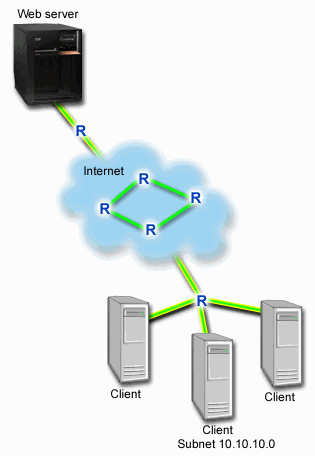You can use quality of service (QoS) to control traffic performance. Use a differentiated service policy to either limit or extend an application's performance within your network.
Situation
Your company has been experiencing high levels of browser traffic from the user-centered design (UCD) group on Fridays. This traffic has been interfering with the accounting department, which also requires good performance from their accounting applications on Fridays. You decide to limit browser traffic from the UCD group. The following figure illustrates the network setup in this scenario.

Objectives
To limit browser traffic out of your network, you might create a differentiated service policy. A differentiated service policy divides your traffic into classes. All traffic within this policy is assigned a codepoint. This codepoint tells routers how to treat the traffic. In this scenario, the policy might be assigned a low codepoint value to affect how the network prioritizes browser traffic.
Prerequisites and assumptions
- You have a service-level agreement (SLA) with your ISP to ensure that the policies receive the requested priority. The QoS policy you create on the iSeries™ server enables traffic (in the policy) to receive priority throughout the network. The QoS policy does not guarantee the priority and is dependent on your SLA. In fact, taking advantage of QoS policies might give you some leverage to negotiate certain service-levels and rates.
- Differentiated service policies require DiffServ-aware routers along the network path. Most routers are DiffServ aware.